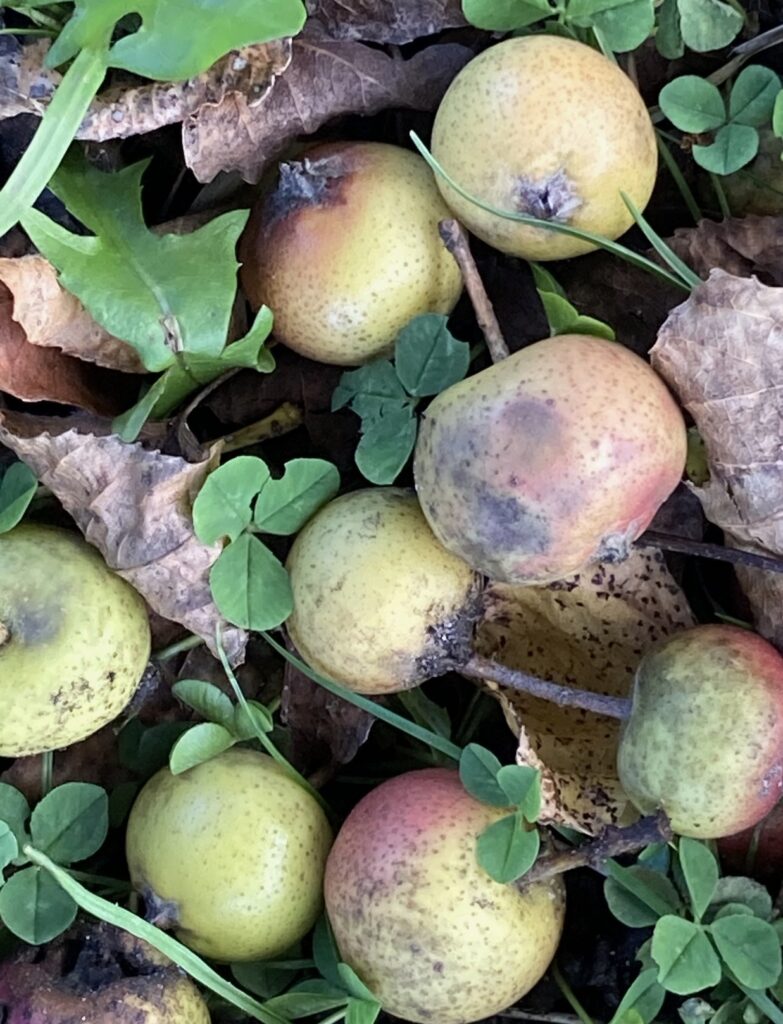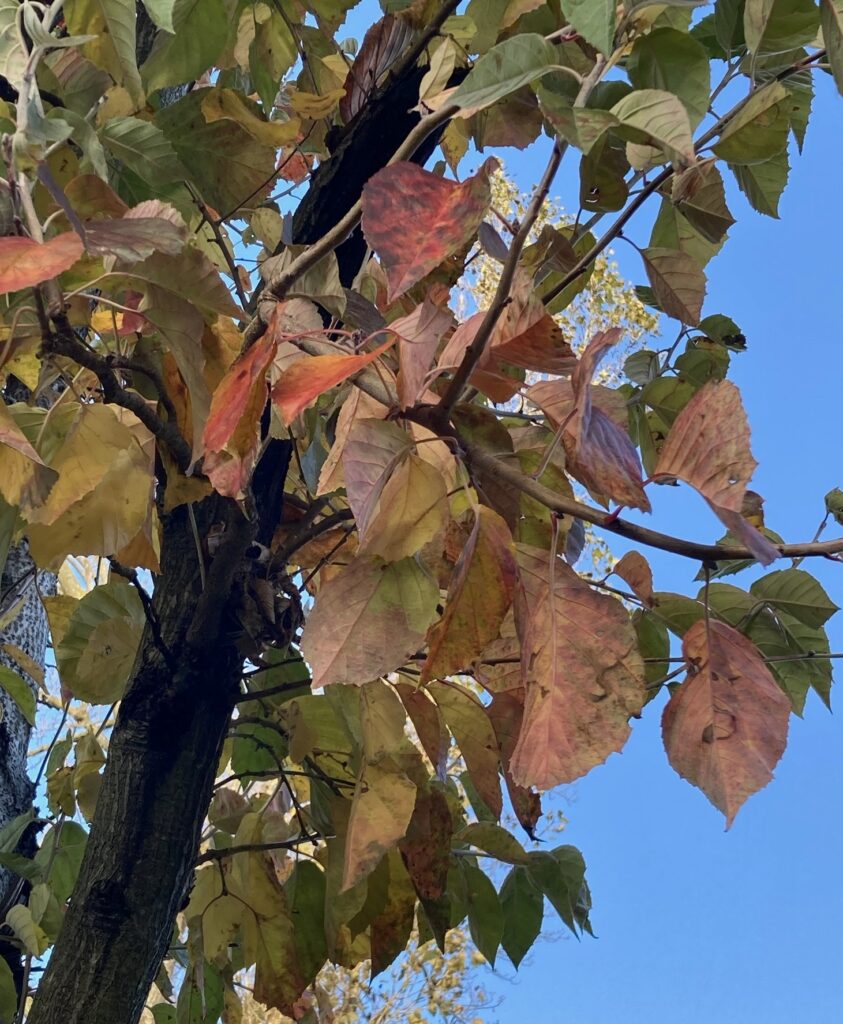What3Words reference: over.chef.hatch
Location notes: by main path next to river; before reaching inlet in river and seat.
A native tree which is one of the ancestors of the thousands of varieties of cultivated apples and can live up to 100 years. It has an irregular but rounded canopy and the twigs may develop spines. They can grow from nursery stock or from discarded eating apple pips, which have reverted to wild or crossed with crab apples.
Buds are brown and pointed on short stalks, and open into glossy oval leaves with serrated edges. The pinky white flowers with 5 petals and yellow stamens appear in spring, providing an important source of early pollen for bees and other insects. The small fruits, which ripen in late September or October often red or flushed with rosy red, are often eaten by birds such as blackbirds, thrushes and crows which disperse the seeds. Small mammals such as mice, voles, foxes and badgers also like the fruit.
Crab apples are associated with love and marriage in mythology and the Celts burned the wood in fertility rites and festivals. The fruit can be used for making a pinky-red jelly and as a source of pectin in jam making or an alternative ingredient to sloes in home made liquer gin. 3 crab apple recipes are available on the Woodland Trust website.
The trees are often planted in commercial apple orchards as they have a long flowering period which helps pollination of the main crop. The wood is good for wood-turning and carving and a yellow dye can be extracted for craft wool products. However the trees are susceptible to various fungal infections and bacterial disease.



